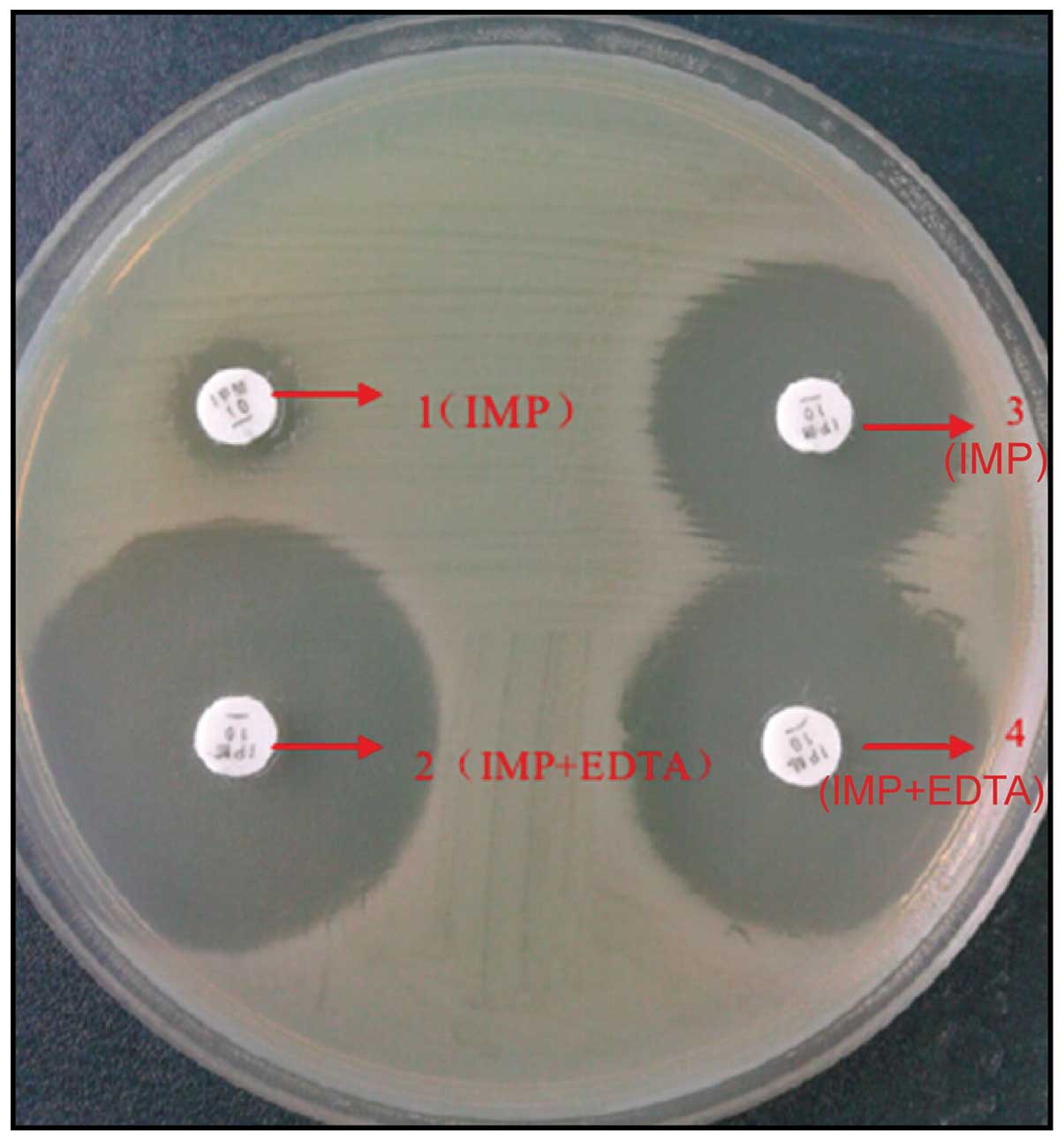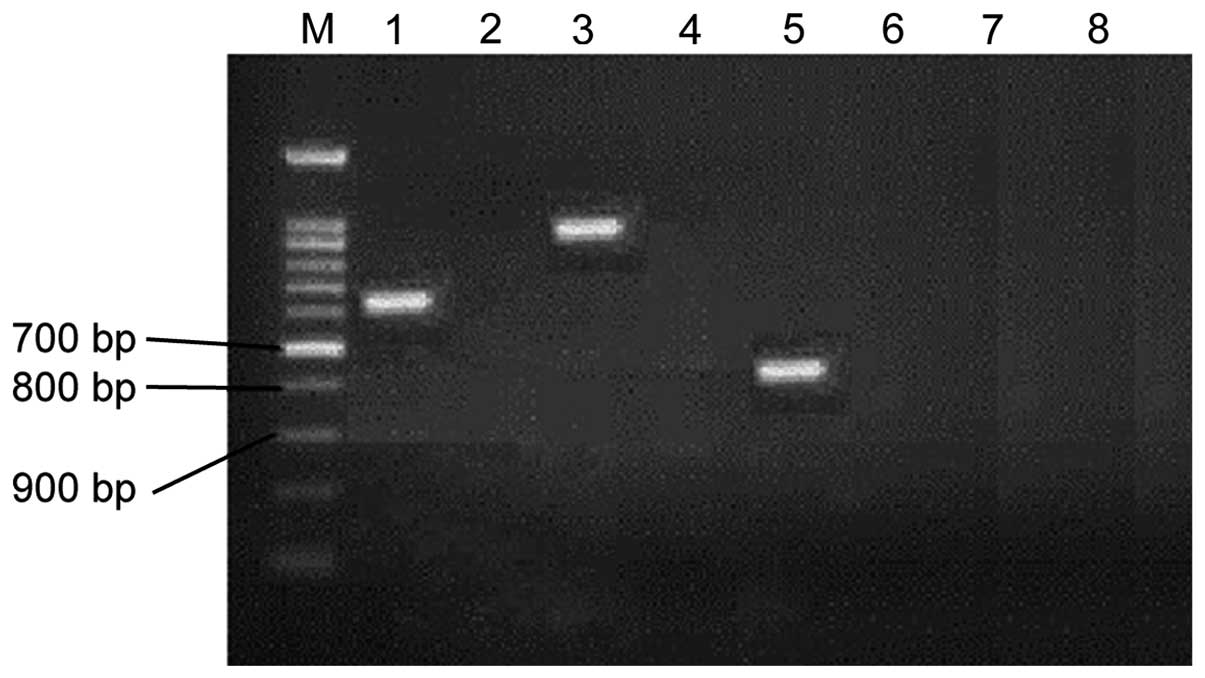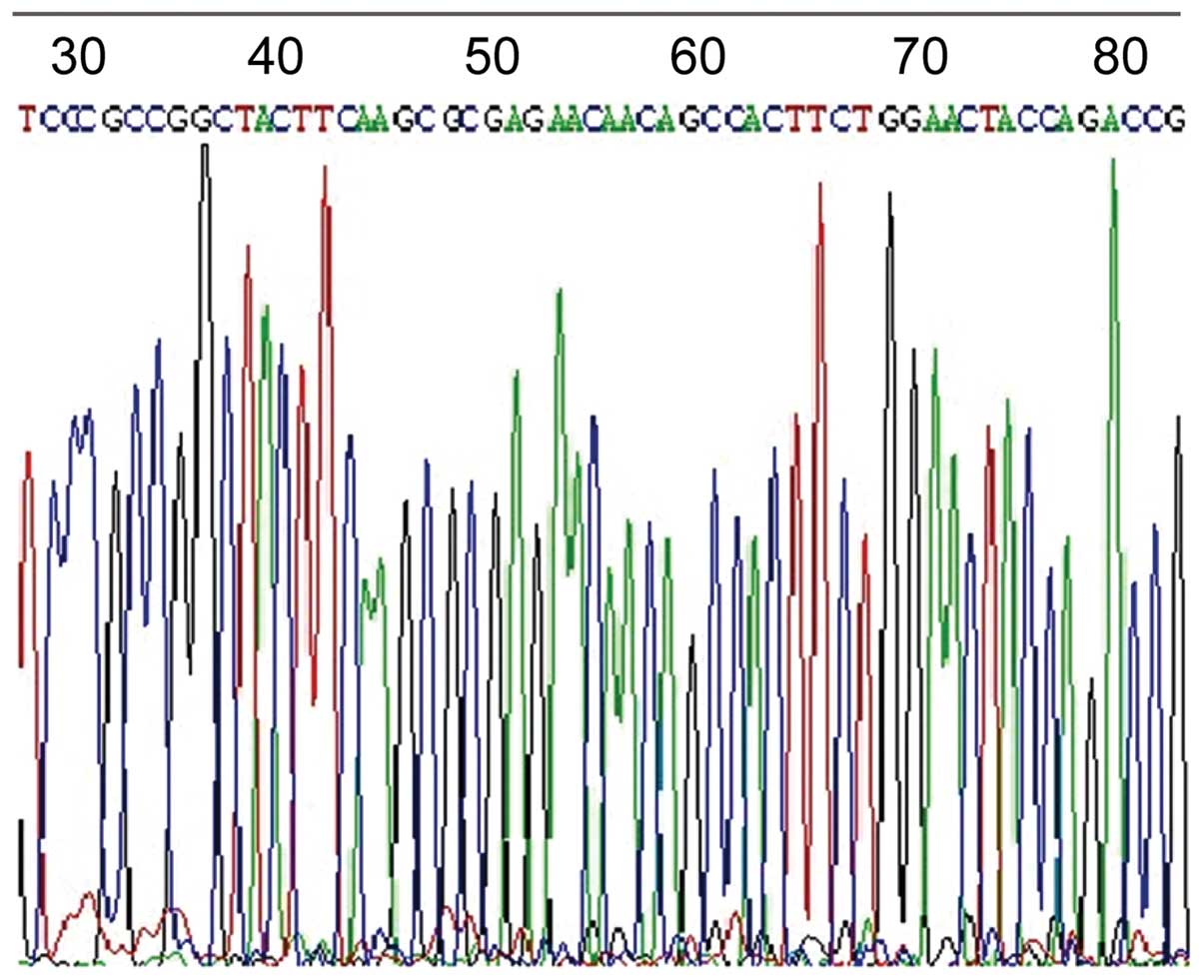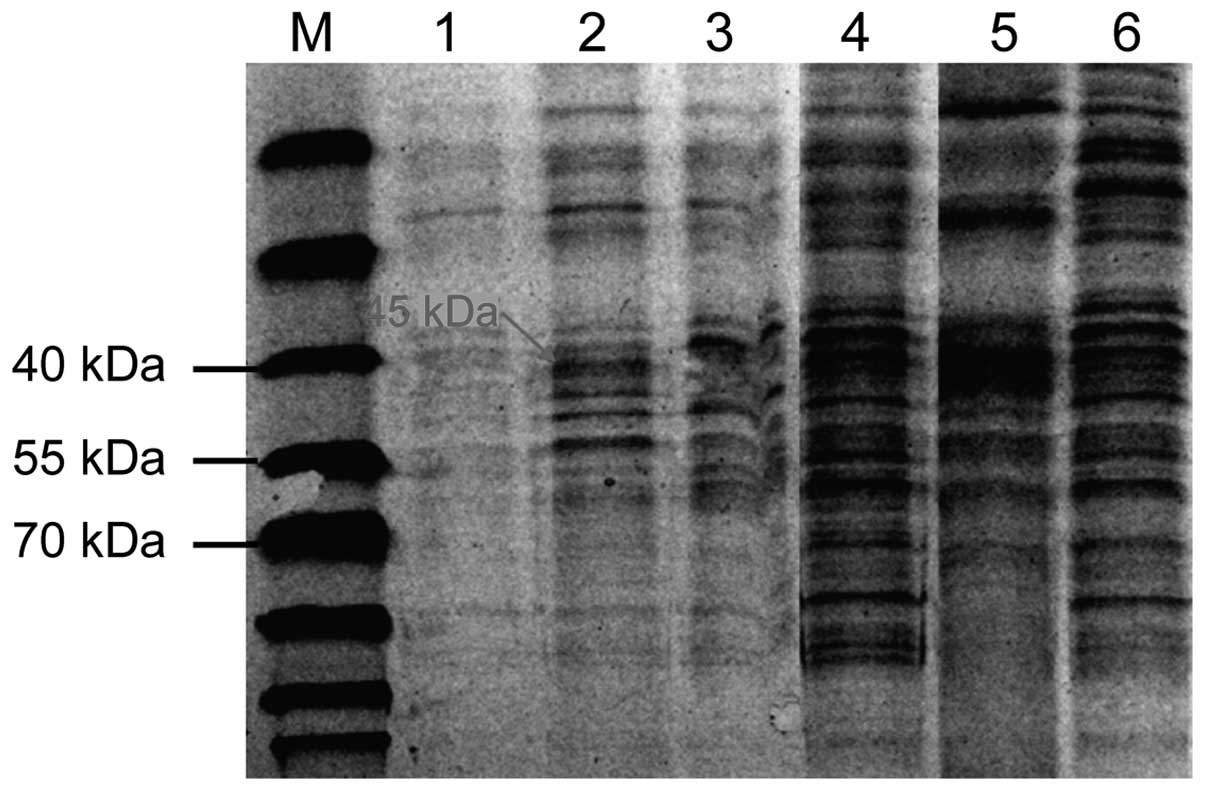Study on the resistance mechanism via outer membrane protein OprD2 and metal β-lactamase expression in the cell wall of Pseudomonas aeruginosa
- Authors:
- Published online on: September 9, 2016 https://doi.org/10.3892/etm.2016.3690
- Pages: 2869-2872
-
Copyright: © Cai et al. This is an open access article distributed under the terms of Creative Commons Attribution License.
Metrics:
Total
Views: 0 (Spandidos Publications: | PMC Statistics:
)
Total PDF Downloads: 0 (Spandidos Publications: | PMC Statistics:
)
Abstract
The aim of the present study was to evaluate the imipenem-resistant mechanism via the outer membrane protein (OMP) OprD2 and metal β‑lactamase expression in the cell wall of Pseudomonas aeruginosa. The Pseudomonas aeruginosa was clinically separated and validated by VITEK‑2 full‑automatic bacteria analyzer. Drug resistance, sensitive antibiotics and minimum inhibitory concentration (MIC) were tested using the drug sensitivity analysis system. The phenotype positive strains of MBL genes were screened using the Kirby‑Bauer diffusion method by adding metal ion‑chelating agent EDTA on the imipenem susceptibility paper. IMP‑1, VIM‑1 and SPM metaloenzyme genes were tested by polymerase chain reaction (PCR)‑telomeric repeat amplification protocol (TRAP). The OMP OprD2 genes were tested by PCR‑TRAP, and the protein expression was tested using western blot analysis. The location of OMP OprD2 was confirmed using the sodium salicylate inhibition test. The results showed that 80 portions (40%) of MBL‑positive strains were screened out of 200 specimens. Imipenem‑resistant Pseudomonas aeruginosa (IRPA) and MIC values were significantly higher than quality control bacteria and control bacteria (P<0.05). A total of 35 cases with IMP‑1 positive, 20 with VIM‑1 positive, 16 with SPM positive, 5 with 2 positive genes and 4 with 3 positive genes were screened among MBL positive strains. A total of 150 portions (75%) of OprD2 deficiencies were screened from 200 specimens. The standard strains and sensitive strains showed OprD2 protein bands at 45 kDa while no OprD2 protein bands appeared in OprD2 deficiency strains. It was in accordance with gene detection. In conclusion, OMP OprD2 deficiency and MBL phenotype positivity may be important mechanisms of IRPA.














